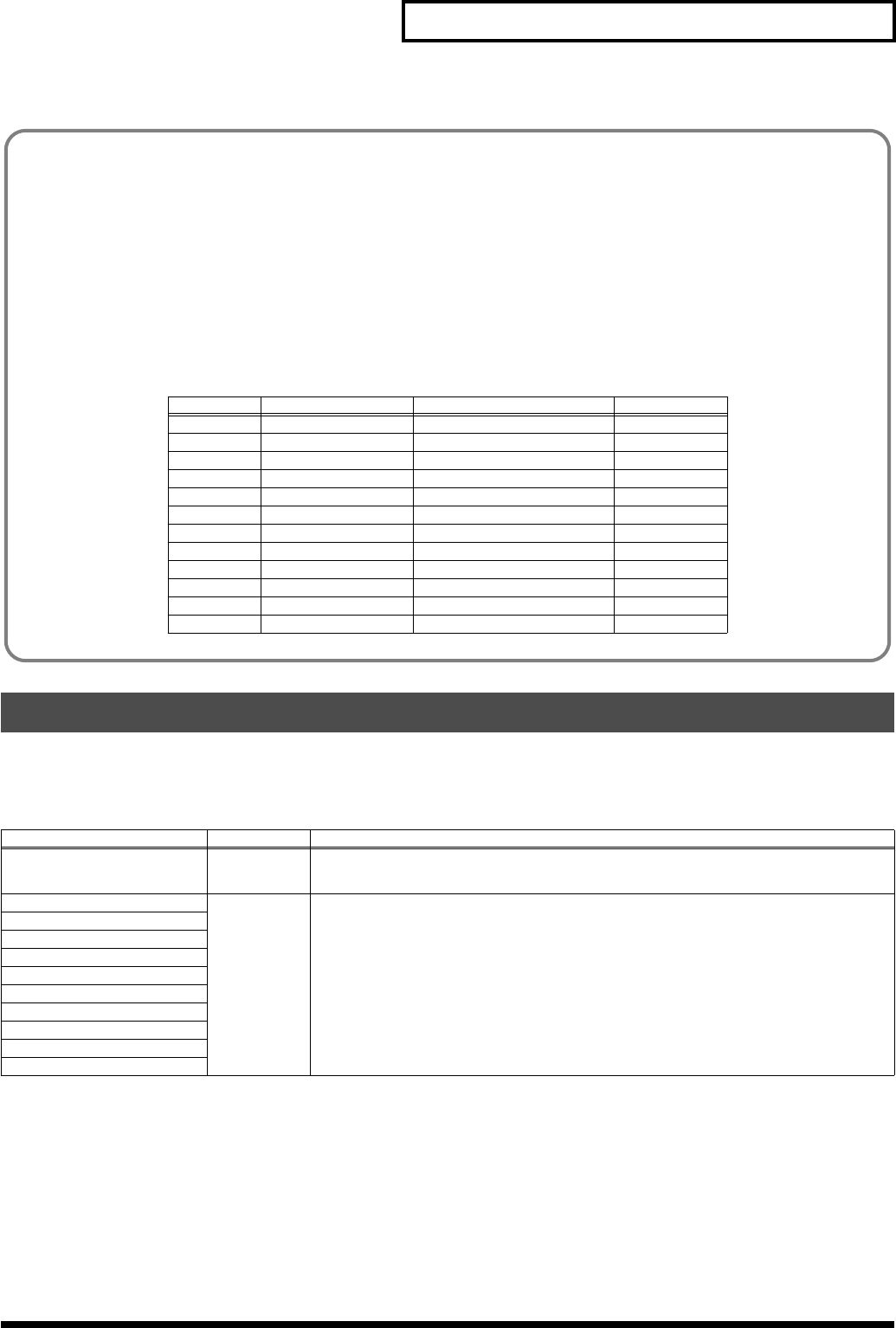
67
Creating a Performance
1.
Access the PERFORM PLAY screen, and select the Performance whose settings you wish to modify (p. 59).
2.
Press [F6 (MIDI)].
The MIDI FILTER screen appears.
MIDI Settings
Parameter
Value Explanation
Rx
OFF, ON (
✔
) For each part, specify whether MIDI messages will be received (ON), or not (OFF).
If this is “OFF,” the part will not respond. Normally, you should leave this “ON,” but you can turn it
“OFF” when you do not want a specific part to be playing during song playback.
PC (Program Change) OFF, ON (
✔
) For each MIDI channel, specify whether MIDI messages will be received (ON), or not (OFF).
BS (Bank Select)
PB (Pitch Bend)
PA (Polyphonic Key Pressure)
CA (Channel Pressure)
Md (Modulation)
Vo (Volume)
Pn (Pan)
Ex (Expression)
Hd (Hold-1)
Equal Temperament
This tuning divides the octave into 12 equal parts, and is the most
widely used method of temperament used in Western music. The
JUNO-G employs equal temperament when the Scale Tune Switch
is set to “OFF.”
Just Temperament (Tonic of C)
Compared with equal temperament, the principle triads sound
pure in this tuning. However, this effect is achieved only in one
key, and the triads will become ambiguous if you transpose.
Arabian Scale
In this scale, E and B are a quarter note lower and C#, F# and G#
are a quarter-note higher compared to equal temperament. The
intervals between G and B, C and E, F and G#, Bb and C#, and Eb
and F# have a natural third-the interval between a major third and
a minor third. On the JUNO-G, you can use Arabian temperament
in the three keys of G, C and F.
<Example>
Note name Equal temperament Just Temperament (tonic C) Arabian Scale
C 0 0 -6
C# 0 -8 +45
D 0 +4 -2
Eb 0 +16 -12
E 0 -14 -51
F 0 -2 -8
F# 0 -10 +43
G 0 +2 -4
G# 0 +14 +47
A 0 -16 0
Bb 0 +14 -10
B 0 -12 -49
JUNO-G_e.book 67 ページ 2006年2月13日 月曜日 午後2時44分


















